The AVGP (Armoured Vehicle General Purpose)
Back in 1977, the Canadian Government ordered three armored fighting vehicles for the military, which would later be named the Grizzly, Cougar and Husky. Rather than build them from scratch, it was quickly chosen to derive these from the six-wheeled version of the proven Swiss MOWAG Piranha I. This modular basis was used for the development of a fire-support/trainer vehicle, the Cougar, an armored personnel carrier, the Grizzly, and an armored recovery vehicle (ARV) to assist both, the Husky. The Cougar entered service in 1976 and stayed active until 2004 when the vehicles were gradually retired and replaced.Development & design of the Cougar
The Cougar was developed starting from the MOWAG Piranha, the famous Swiss wheeled armored vehicle that significantly influenced NATO and worldwide designs with its whole range of highly modular, multipurpose vehicles. Basically, the Cougar was the 6x6 variant of the Swiss vehicle fitted with the turret of the British Scorpion reconnaissance vehicle (76 mm/3 in main gun).Like the original Piranha, the Cougar had an RHA welded steel hull and was completely amphibious. It had a typical lozenge section and a pronounced beak nose with a two-step sloped front section. Protection was assured against small-arms fire and artillery splinters all around, and against heavy caliber MG rounds from the front. The driver sat in the front of the vehicle, on the left, next to the engine. He had a hatch and three periscopes (the central one could be replaced with a night vision device), plus a folded windshield. The commander and gunner were placed in the central fighting compartment, inside the two-man turret. There were also 2 soldiers seated in the rear of vehicle, who could disembark through the rear doors. There were no pistol ports.
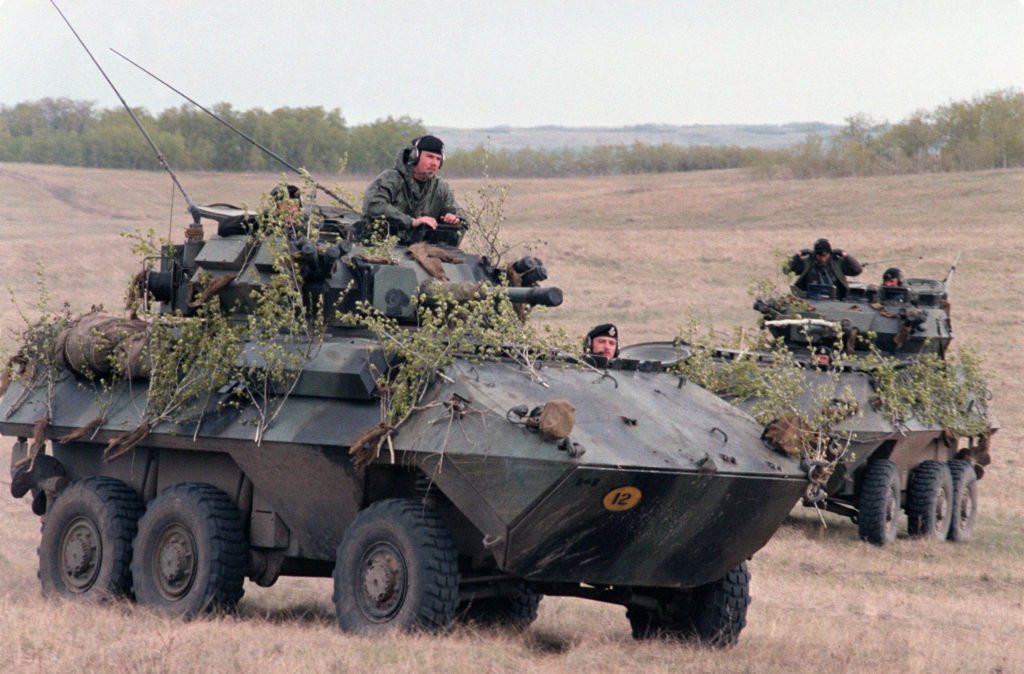
AVGP Cougar during an exercise
The Cougar was propelled by a sturdy Detroit Diesel 6V53T two-cycle turbo-charged diesel which provided 275 hp to the ten ton vehicle. This was translated into a top speed of 100 km/h (60 mph), and up to 50-60 km/h off-road. When crossing bodies of water, it was propelled by two propellers at the rear. A trim vane was erected at the front before any crossing and the bilge pumps were activated. The Cougar could overcome a 60% gradient slope or a 30% side slope, a 0.8 m high wall or gap a 1.20m trench. The Cougar's main armament was the 76 mm (3 in) low-velocity L23A1 gun, which could fires HESH, smoke BE (base ejected) rounds and canister rounds for infantry support. It was coupled with a 7.62 mm (0.3 in) C6 machine gun C6 mounted co-axially. For active concealment, the turret received two clusters of four 66 mm No 12 smoke grenade launchers.
Active service
The Cougar was used both for training and as a reconnaissance vehicle and the armored units employed it as a fire support vehicle. Humorously, it was often referred to as the "boat squadron", as opposed to reconnaissance squadrons equipped with the tracked Lynx, and later the 8x8 Coyote. The Cougar was used by the IFOR/KFOR in ex-Yugoslavia.
The AVGP family of vehicles - Credits: missing-lynx.com
In 2008, the Uruguayan Army purchased 44 surplus Cougars. These were rebuilt locally by the Chilean FAMAE company, the local MOWAG Piranha license holder. They were transformed into turretless armored personnel carriers. These were used by the UN (MONUC) in the Republic of Congo. Later on, as Cougars were gradually retired from service, some were modified into the TRV (Tactical Response Vehicle) variant for emergency tasks and given for free to the Royal Canadian Mounted Police in British Columbia in March 2010. Also starting in the 1990s, in order to reduce maintenance costs, all marine propulsion systems were removed. The Cougars have been replaced in the Canadian Army by the Coyote. Although reliable, the Cougars were seldom-fitted for reconnaissance tasks, being too tall and having a slow firing armament not ideal for hit and run tactics.
Links
The AVGP series on WikipediaThe Cougar on CASR.ca
AVGP Cougar specifications |
|
| Dimensions | 5.97 x2.5x 2.5m 19'7''x8'2''x8'2'' |
| Total weight, battle ready | 10.7 tons |
| Crew | 3+2 (driver, commander, gunner +2 infantrymen) |
| Propulsion | Detroit Diesel 6V53T Turbodiesel, 275 hp |
| Suspension | 6x6 independent coil springs |
| Speed (road) | 100 km/h (60 mph) |
| Range | 500 km (300 mi) |
| Armament | 76 mm (3 in) L23A1 Coaxial 7.62 mm (0.3 in) C6 machine-gun |
| Armor | 8 mm sides to 13 mm front (0.31-0.51 in) |
| Total production | 195 in 1976-80 |
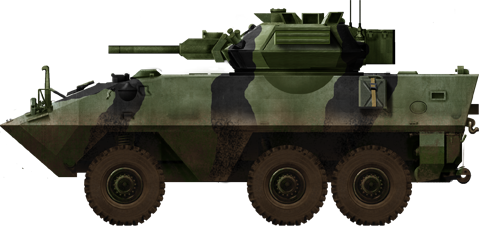
Camouflaged Cougar during exercises
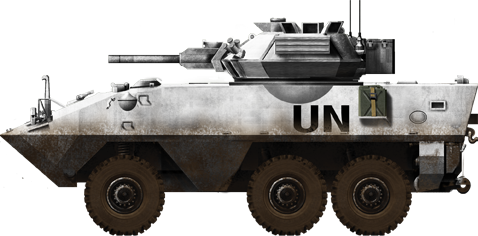
Cougar during a peace-keeping operation with the UN in Somalia.
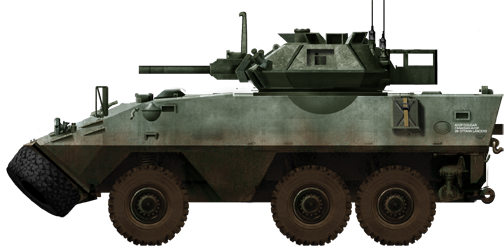
AVGP Cougar in green livery
Gallery
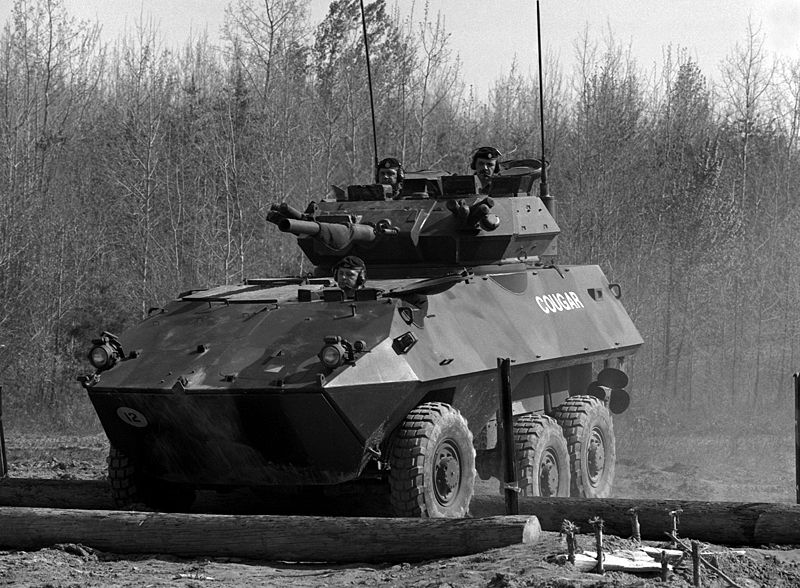
AVGP Cougar on an obstacle course during the 1976 trials.
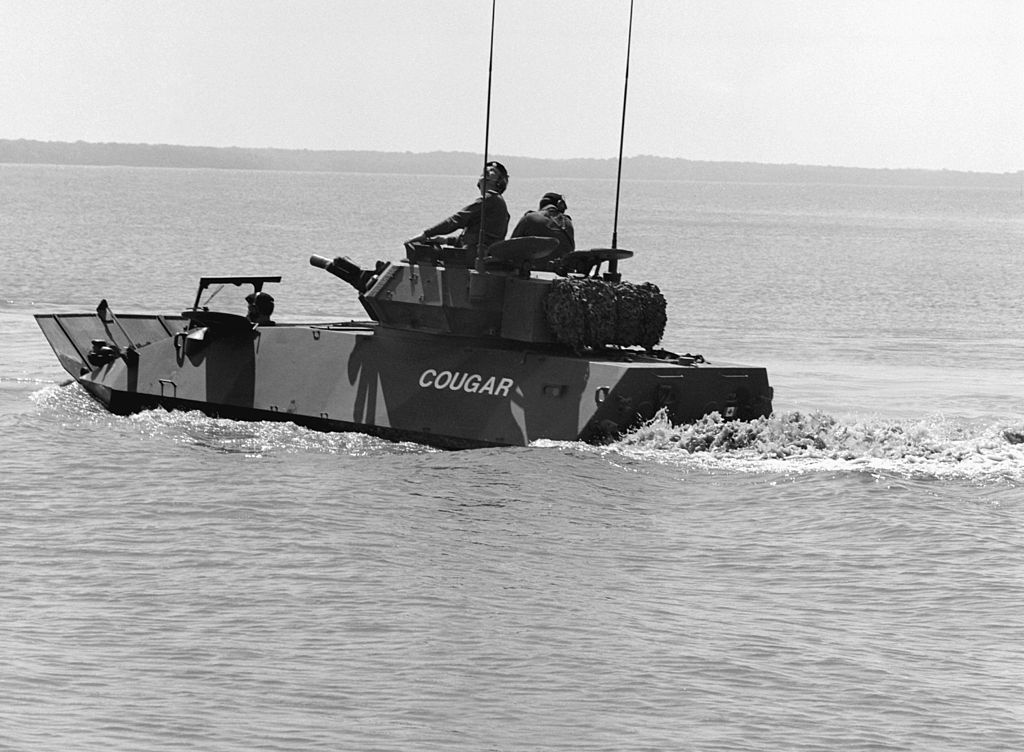
Canadian AVGP swimming. Notice the trim vane at the front.
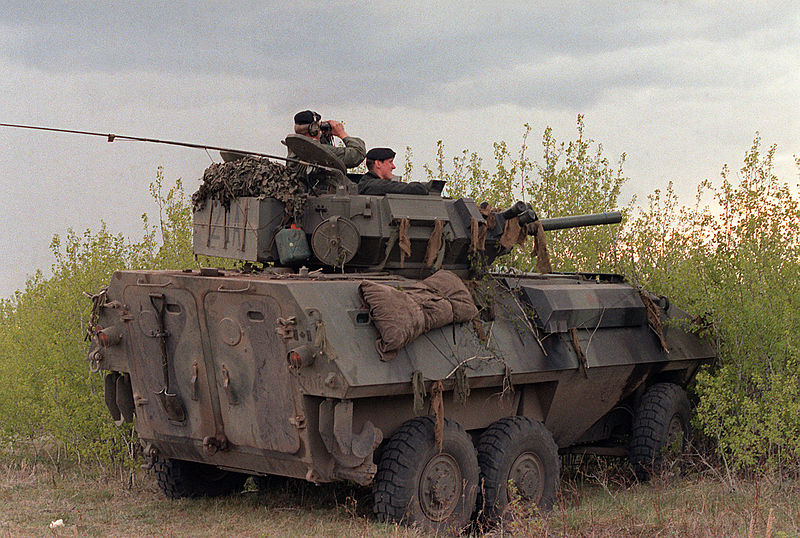
A good view of the rear of a Cougar
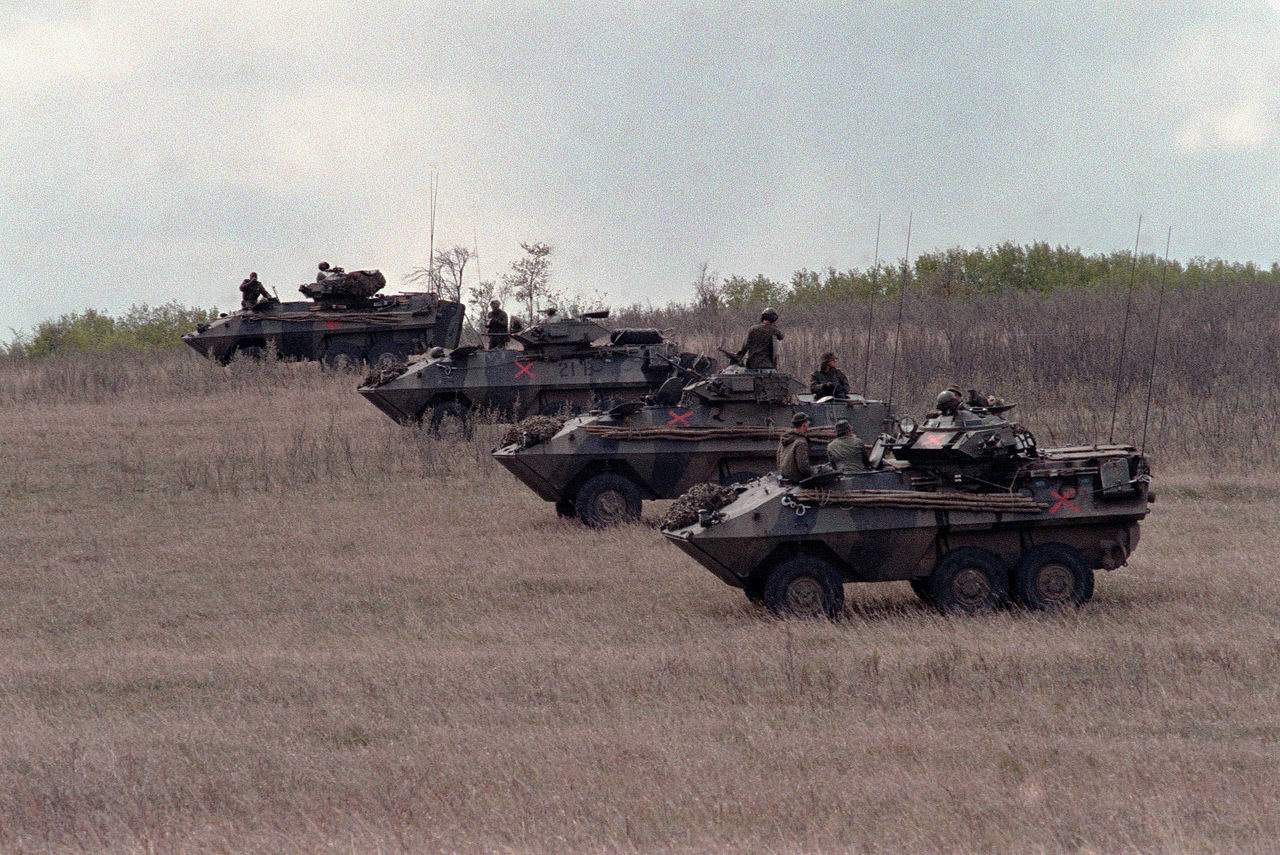
The direct relative of the Cougar, the Grizzly APC

Cold War Tanks


































Cold war tanks posters

Cold War Main Battle Tanks

Cold War Soviet Army
Museums, Movies, Books & Games
The Tanks and Armor in pop culture
Tanks and armored vehicles in general are only really grasped when seen first person: The mass, the scale, it's all there. Explore also the way tanks were covered in the movie industry, in books and in video games.Movies:
Best tanks movie on warhistoryonline.com
On imdb.com
On bestsimilar.com/
miltours.com
liveabout.com/
watchmojo.com
Video Games:
pcgamesn.com
historyhit.com
levvvel.com
vg247.com/best-tank-games
mmobomb.com/
alienwarearena.com

